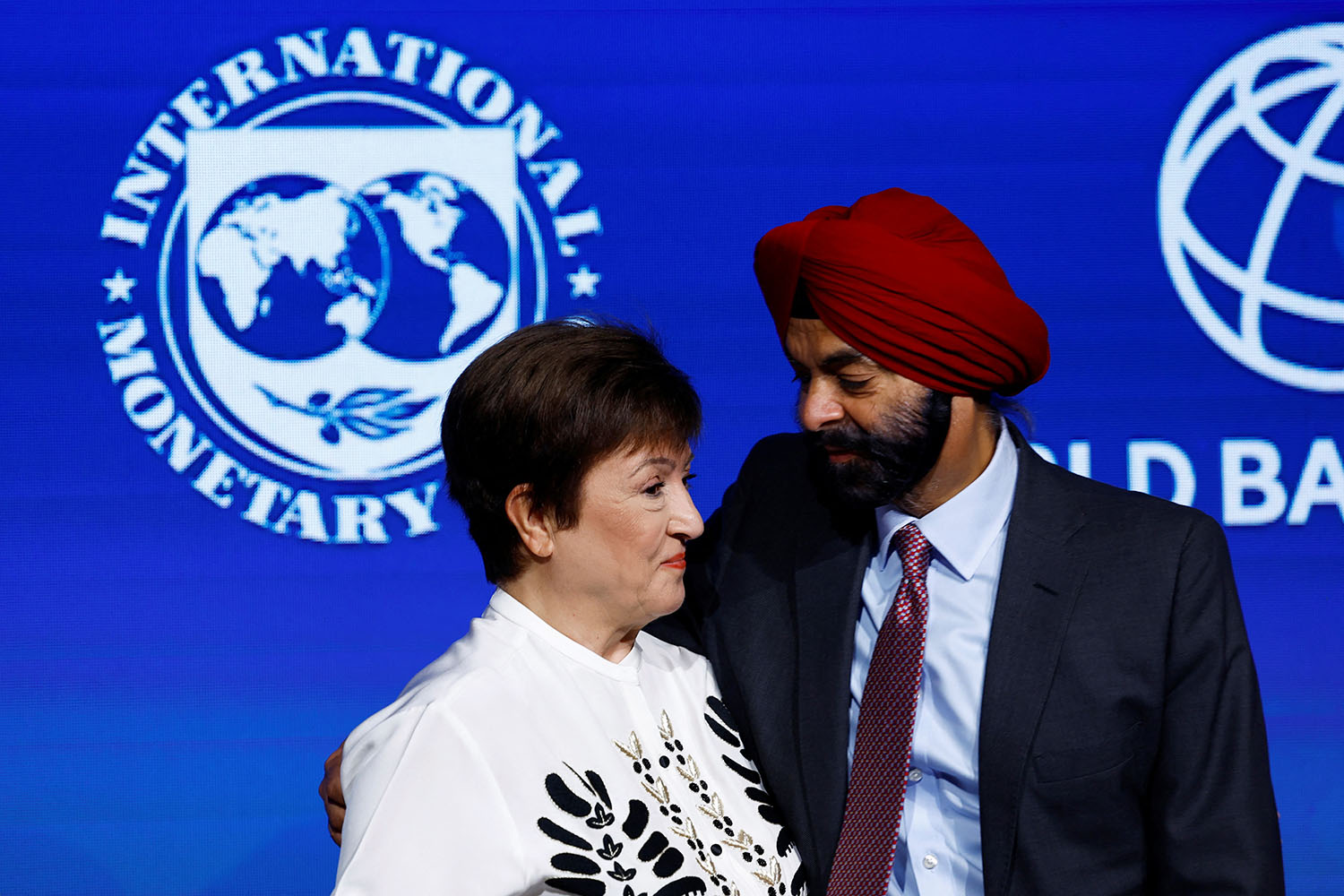World Economic Outlook Update, July 2025: Global Economy: Tenuous Resilience amid Persistent Uncertainty – International Monetary Fund

Global Economic Outlook July 2025: Implications for Sustainable Development Goals
Economic Growth Projections and SDG 8 (Decent Work and Economic Growth)
Global economic growth is projected at 3.0 percent in 2025 and 3.1 percent in 2026. While this upward revision presents a potential advancement for SDG 8, the growth is characterized by tenuous resilience amid persistent uncertainty. The primary drivers for this revision include short-term factors such as front-loading ahead of anticipated tariffs, lower effective tariff rates, improved financial conditions, and fiscal expansion in key economies. The sustainability of this growth and its capacity to generate decent work for all remains a significant concern for the achievement of SDG 8 targets.
Inflationary Pressures and their Impact on SDGs 1, 2, and 10
A projected decrease in global inflation offers a positive outlook for progress on several SDGs. Lower inflation can help protect the purchasing power of the most vulnerable households, contributing directly to:
- SDG 1 (No Poverty): By preventing the erosion of real incomes for low-income families.
- SDG 2 (Zero Hunger): By stabilizing food prices and improving food security.
However, the prediction that US inflation will remain above its target poses a risk. Persistent inflation in a major economy can lead to financial tightening that disproportionately affects developing nations, potentially widening global disparities and hindering progress on SDG 10 (Reduced Inequalities).
Global Trade Environment and SDG 17 (Partnerships for the Goals)
The current economic landscape is marked by trade-related distortions and significant downside risks. These factors present a direct challenge to SDG 17 (Partnerships for the Goals), which calls for a universal, rules-based, and equitable multilateral trading system. Key risks that threaten global cooperation and economic stability include:
- The potential for higher tariffs, which could disrupt global supply chains and harm developing economies.
- Elevated economic and policy uncertainty, which deters long-term investment crucial for sustainable development.
- Ongoing geopolitical tensions that undermine international cooperation and partnerships.
Key Policy Priorities for Advancing the 2030 Agenda
To navigate the current uncertainty and align global economic activity with the 2030 Agenda for Sustainable Development, a clear focus on core policy priorities is essential. Restoring confidence, predictability, and sustainability is paramount for creating an enabling environment for the SDGs.
- Restore Confidence: Foster stable macroeconomic conditions to encourage long-term private and public investment in critical SDG-related sectors, such as renewable energy, education, and healthcare.
- Enhance Predictability: Strengthen multilateral institutions and reaffirm commitments to a rules-based international order, particularly in trade, to reduce uncertainty and support the objectives of SDG 17.
- Ensure Sustainability: Mandate that fiscal expansion and economic recovery strategies are explicitly linked to sustainable and inclusive outcomes, ensuring that growth does not come at the expense of environmental integrity or social equity.
1. Which SDGs are addressed or connected to the issues highlighted in the article?
The article on global economic projections touches upon several Sustainable Development Goals, primarily focusing on economic stability, trade, and the broader conditions that influence sustainable development.
SDG 8: Decent Work and Economic Growth
- The core theme of the article is “Global growth,” with specific projections of “3.0 percent for 2025 and 3.1 percent in 2026.” This directly aligns with SDG 8, which aims to promote sustained, inclusive, and sustainable economic growth.
SDG 17: Partnerships for the Goals
- The article’s discussion of “trade-related distortions,” “tariffs,” and the need for “predictability” connects to SDG 17. This goal emphasizes the importance of a global partnership for sustainable development, including a universal, rules-based, and equitable multilateral trading system. The mention of “fiscal expansion in some major jurisdictions” also points to policy coordination, a key aspect of global partnerships.
SDG 16: Peace, Justice and Strong Institutions
- The identification of “geopolitical tensions” as a “downside risk” to economic stability provides a link to SDG 16. This goal seeks to promote peaceful and inclusive societies, as instability and conflict are significant impediments to sustainable development and economic predictability.
2. What specific targets under those SDGs can be identified based on the article’s content?
Based on the issues discussed, the following specific targets can be identified:
SDG 8: Decent Work and Economic Growth
-
Target 8.1: Sustain per capita economic growth in accordance with national circumstances and, in particular, at least 7 per cent gross domestic product growth per annum in the least developed countries.
- Justification: The article is entirely focused on measuring and projecting “Global growth,” which is the central theme of this target. The specific figures, “3.0 percent for 2025 and 3.1 percent in 2026,” are direct measures related to this objective.
SDG 17: Partnerships for the Goals
-
Target 17.10: Promote a universal, rules-based, open, non-discriminatory and equitable multilateral trading system under the World Trade Organization, including through the conclusion of negotiations under its Doha Development Agenda.
- Justification: The article highlights threats to this system by mentioning “trade-related distortions,” “tariffs,” and the “downside risks from potentially higher tariffs.” The call to restore “predictability” is a call to strengthen the multilateral trading system that this target promotes.
-
Target 17.13: Enhance global macroeconomic stability, including through policy coordination and policy coherence.
- Justification: The article is a macroeconomic stability report. It discusses “Global inflation,” “fiscal expansion,” and lists “restoring confidence, predictability, and sustainability” as a “key policy priority,” all of which are central to the goal of enhancing global macroeconomic stability.
SDG 16: Peace, Justice and Strong Institutions
-
Target 16.1: Significantly reduce all forms of violence and related death rates everywhere.
- Justification: While not a direct mention, the article’s identification of “geopolitical tensions” as a significant “downside risk” to the global economy implicitly connects to this target. These tensions are precursors to conflict and violence, which this target aims to reduce.
3. Are there any indicators mentioned or implied in the article that can be used to measure progress towards the identified targets?
The article implies several metrics that align with official SDG indicators, although it does not name them explicitly.
Explicitly Mentioned Metrics
- Annual Growth Rate of Real GDP: The article’s projections for “Global growth” at “3.0 percent for 2025 and 3.1 percent in 2026” directly correspond to Indicator 8.1.1: Annual growth rate of real GDP per capita. While the article refers to overall global growth, it is the primary metric for this indicator.
- Inflation Rate: The statement that “Global inflation is expected to fall, but US inflation is predicted to stay above target” is a direct reference to the inflation rate, which is a key measure of macroeconomic stability relevant to Target 17.13.
Implied Concepts for Measurement
- Trade Tariffs: The mention of “tariffs” and “lower effective tariff rates” relates to Indicator 17.10.1: Worldwide weighted tariff-average. The article discusses the impact of tariffs, which is what this indicator measures.
- Economic Uncertainty/Volatility: The reference to “elevated uncertainty” and the policy goal of restoring “predictability” points towards the need for indicators that measure economic volatility and investor confidence, which are crucial for assessing progress on Target 17.13 (Enhance global macroeconomic stability).
4. Create a table with three columns titled ‘SDGs, Targets and Indicators’ to present the findings from analyzing the article.
| SDGs | Targets | Indicators (Mentioned or Implied) |
|---|---|---|
| SDG 8: Decent Work and Economic Growth | Target 8.1: Sustain per capita economic growth… | Indicator 8.1.1: Annual growth rate of real GDP per capita (Implied by “Global growth is projected at 3.0 percent for 2025”). |
| SDG 17: Partnerships for the Goals | Target 17.10: Promote a universal, rules-based, open… multilateral trading system… | Indicator 17.10.1: Worldwide weighted tariff-average (Implied by discussion of “tariffs” and “trade-related distortions”). |
| Target 17.13: Enhance global macroeconomic stability… | Inflation Rate (Mentioned as “Global inflation is expected to fall”). | |
| SDG 16: Peace, Justice and Strong Institutions | Target 16.1: Significantly reduce all forms of violence… | Metrics on political stability and conflict (Implied by “geopolitical tensions” as a downside risk). |
Source: imf.org

What is Your Reaction?
 Like
0
Like
0
 Dislike
0
Dislike
0
 Love
0
Love
0
 Funny
0
Funny
0
 Angry
0
Angry
0
 Sad
0
Sad
0
 Wow
0
Wow
0














































































